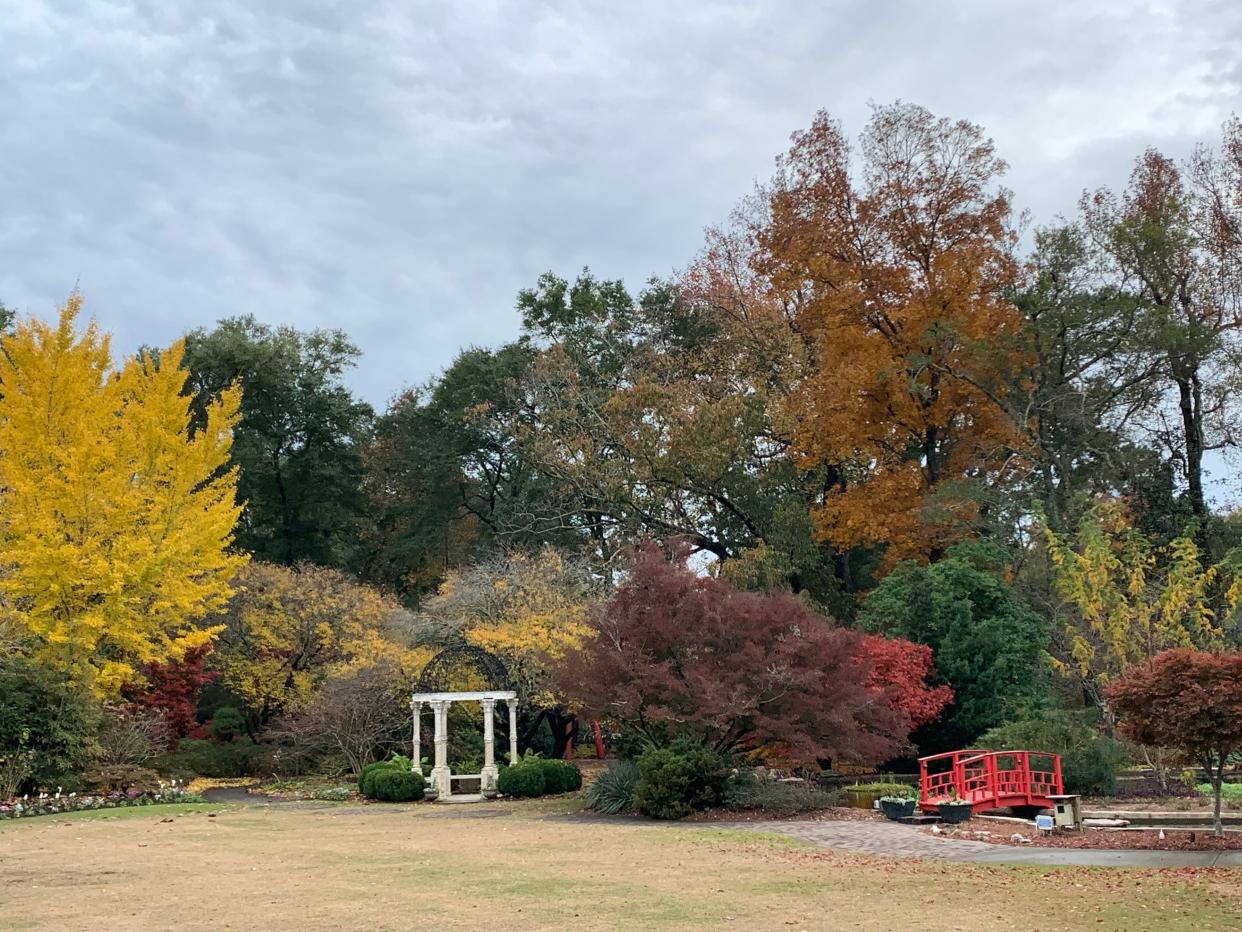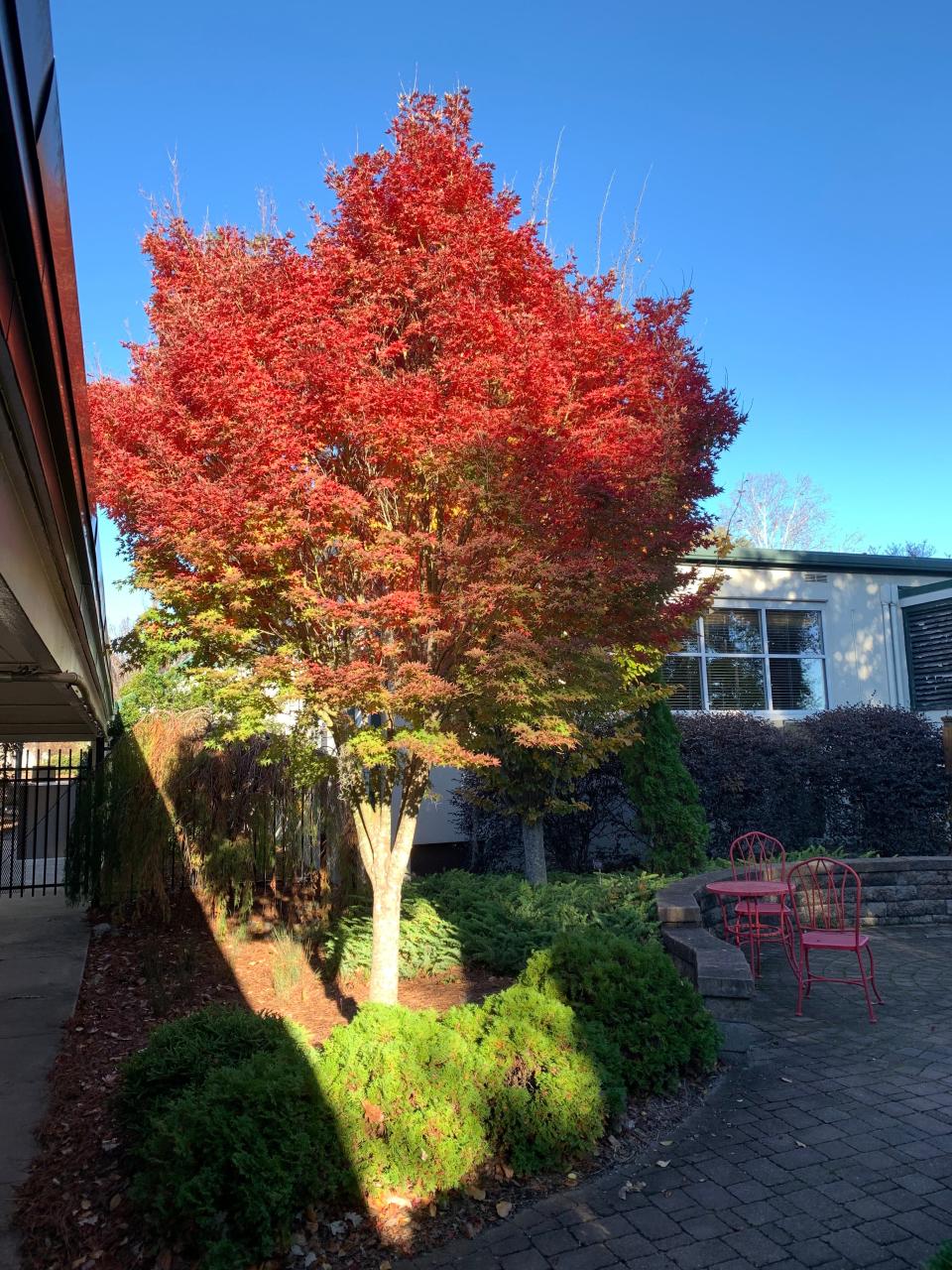Plant these trees to see a burst of fall colors in the Wilmington area

Chlorophyll, carotenoids, and anthocyanin?
Robert Bardon of N.C. State University explains “Leaves get their green color from a pigment called chlorophyll. This green pigment, necessary for food production, is found in leaves which also contain yellow or orange carotenoids. Most of the year these yellowish colors are masked by the greater amount of green coloring. But in the fall, partly because of changes in the period of daylight and changes in temperature the chlorophyll breaks down, the green color disappears, and the yellowish colors become visible. The red pigment, anthocyanin, appears later from a high concentration of simple sugars in the leaf cells and warm sunny days followed by cool nights. Variations in leaf colors are due to the mixing of varying amounts of the chlorophyll and other pigments in the leaf during the fall season.” Read more here: https://forestry.ces.ncsu.edu/2018/09/change-is-in-the-air-the-miracle-of-fall-colors/.
Some of the most amazing color combinations in trees suited to our southeastern North Carolina region can be found in leaves of maples, gums, and “woods:”
Red Maple (Acer rubrum) is a native, deciduous tree commonly 40 to 70 feet high. It is a handsome shade tree with a rounded crown, is easy to grow in medium to wet soil, and one of the first trees to show its orange-red color in the fall.

Japanese Maple (Acer palmatum and cultivars) are small trees native to Asia in a variety of forms and colors. Growth is slow to moderate; plant in dappled shade and evenly moist, well-drained soil. Color varies by cultivar from green during summer to yellow, bronze, purple, and red in fall.
Sweetgum (Liquidambar styraciflua) is a large native tree frequently found in swampy areas. Often disliked for its spiny, woody fruit, this deciduous tree averages 70 feet high. The star-shaped leaves turn bright red, purple, yellow, or orange in the early winter here.
Black Gum (Nyssa sylvatica) leaves transform into a stunning orange-red and hues ranging from yellow to purple and everything in between. This native shade tree produces black, grape-like fruits appear in the early fall and are relished by many native wildlife.
Dogwood (Cornus florida) is a small native deciduous, flowering understory tree with beautiful reddish fall foliage. The flowering dogwood grows best in a spot with afternoon shade and with soil that is high in organic matter. The dogwood’s true flowers are visited by butterflies and specialized bees, and its red fruits are a food source for wildlife from through winter.
Sourwood (Oxydendrum arboreum) has brilliant scarlet coloration in the early autumn landscape. With a height around 25 feet and single, straight trunk and compact crown, this fantastic native tree gives the best show in a sunny site.
Plant a tree this winter.

Lloyd Singleton is the director of the NC Cooperative Extension – New Hanover County Center and Arboretum, . located at 6206 Oleander Drive in Wilmington. The gardens are free and open daily from 8 a.m.– 5 p.m. Singleton can be reached at lsingleton@nhcgov.com or 910-798-7660.
This article originally appeared on Wilmington StarNews: Trees to plant in Wilmington to get fall colors

